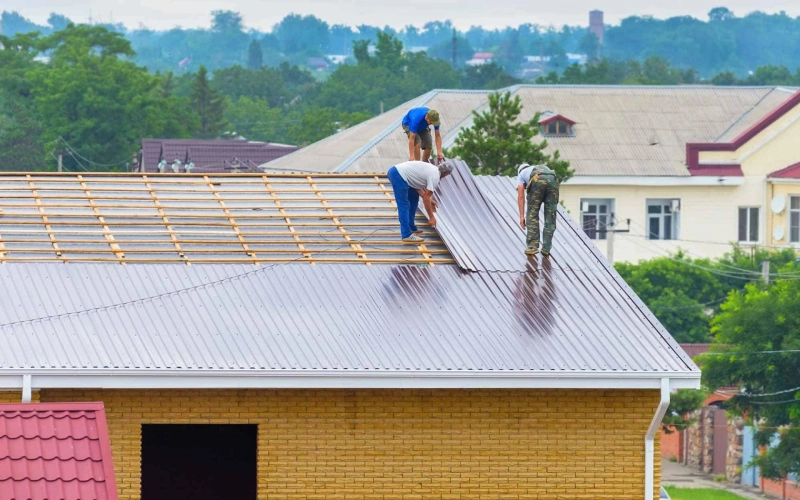There are many things to consider when roofing a commercial building, including the type of materials used. Commercial roofs are often made of steel or copper, but they can also be made from rubber, concrete, or clay. A roofing expert can help you choose the right products for your building. Listed below are some helpful tips.
Cleaning off the roof
Cleaning off commercial roofing is an important step to keep the roof in good condition. Debris and other materials on the roof can cause the roofing membrane to break down and damage the roof. Debris may also affect energy efficiency. It absorbs sunlight and can cause the interior of the building to become warmer than normal, increasing energy costs.
Regular cleaning of commercial roofs helps keep roofs in good condition, preventing the accumulation of water. If water accumulates, it can cause the roof to crack or blister. If the roof is made of metal, the accumulated water may also cause rust to form on the surface. Additionally, regular cleaning can prevent the development of problems such as fire.
Checking the field drains and gutters
Before starting a roof repair project, it is important to check the gutters and field drains. If they are not properly functioning, water can pond on the roof, causing further damage. Make sure that the gutters are securely attached and are free of debris. Checking the downspouts is especially important, as they are responsible for moving water away from the roof. The downspouts must also be properly sealed.
Clogged roof drains can result in serious damage during a rainstorm. Make sure to check your roof drains at least four times a year to ensure they are working properly. Checking them more often is essential if you notice that water is pooling on a flat roof. Similarly, if you notice a discoloration of the roof around the drain, it could be a sign that the drains are clogged. If you suspect that your drains have clogs, call a professional to inspect them.
Checking the interior of the roof
When it comes to the interior of your commercial roof, it is crucial to take extra care. If you notice excessive moisture or a damp basement, it may be a sign of a leaking roof. These conditions will cause your HVAC system to overwork and increase your energy bill. Luckily, there are some simple things you can do to prevent these problems before they even start.
During the inspection, your inspector will also check out the interior of your building to look for signs of damage. Often, water stains and mold are signs of a leaking roof, which can compromise the integrity of your building. They will also check the skylights, vents, and HVAC system to see if they are damaged or in need of repairs.
Inspecting the roof after a storm
After a storm, it is important to inspect the roof again to ensure that no additional damage has occurred. Even if your roof is relatively new, storm damage can cause major problems in a matter of minutes. Here are a few things to keep in mind when inspecting the roof after a storm.
Storm damage may leave unseen problems that are hard to spot, so it is important to hire a professional to inspect your roof. You should try to repair any visible damage that is visible to you as soon as possible. Otherwise, ignoring such damages will lead to bigger problems down the road. A professional roof inspection may also detect small, hidden damage on the interior of your roof that you may not be aware of.
You can also check the ceilings and top corners of the walls in upper stories for signs of water damage. If you notice stains, this could be a sign of a major leak. If you see a stain, it is important to contact a licensed roofing contractor to have it removed as soon as possible. A licensed roofer will also be able to diagnose the damage quickly.


